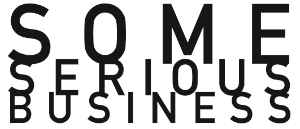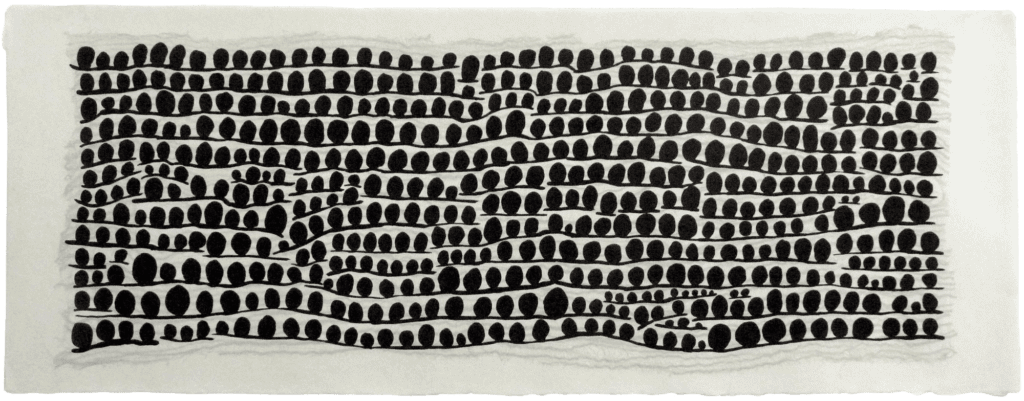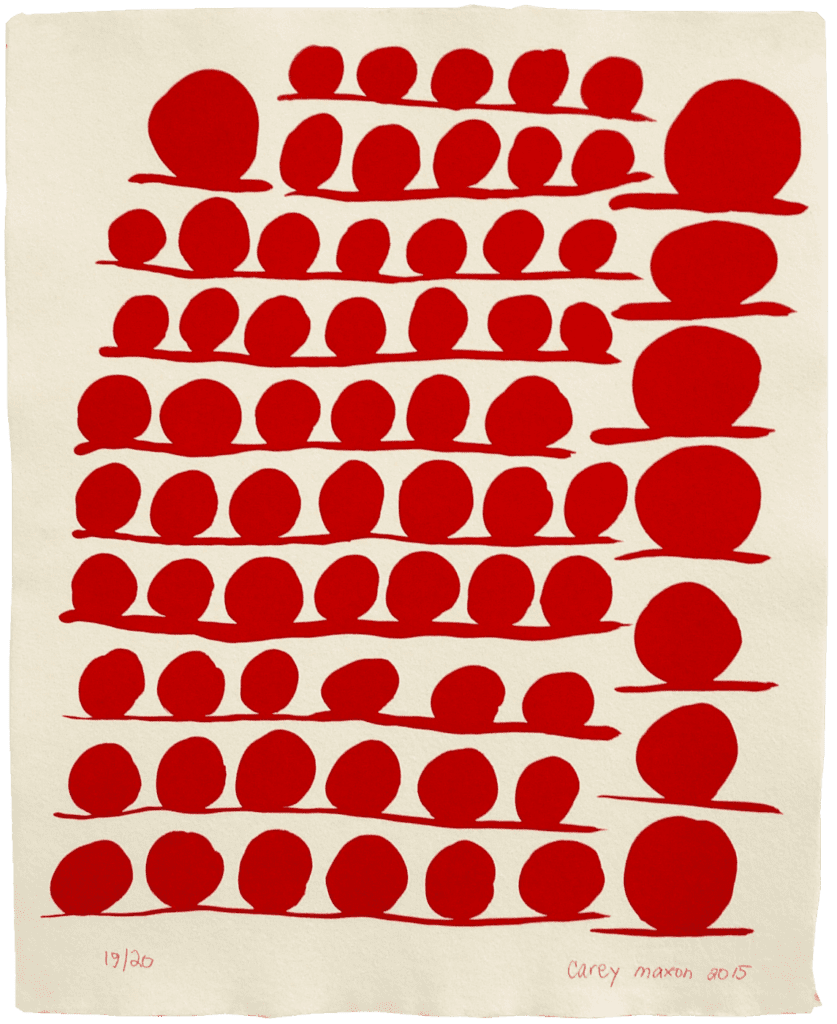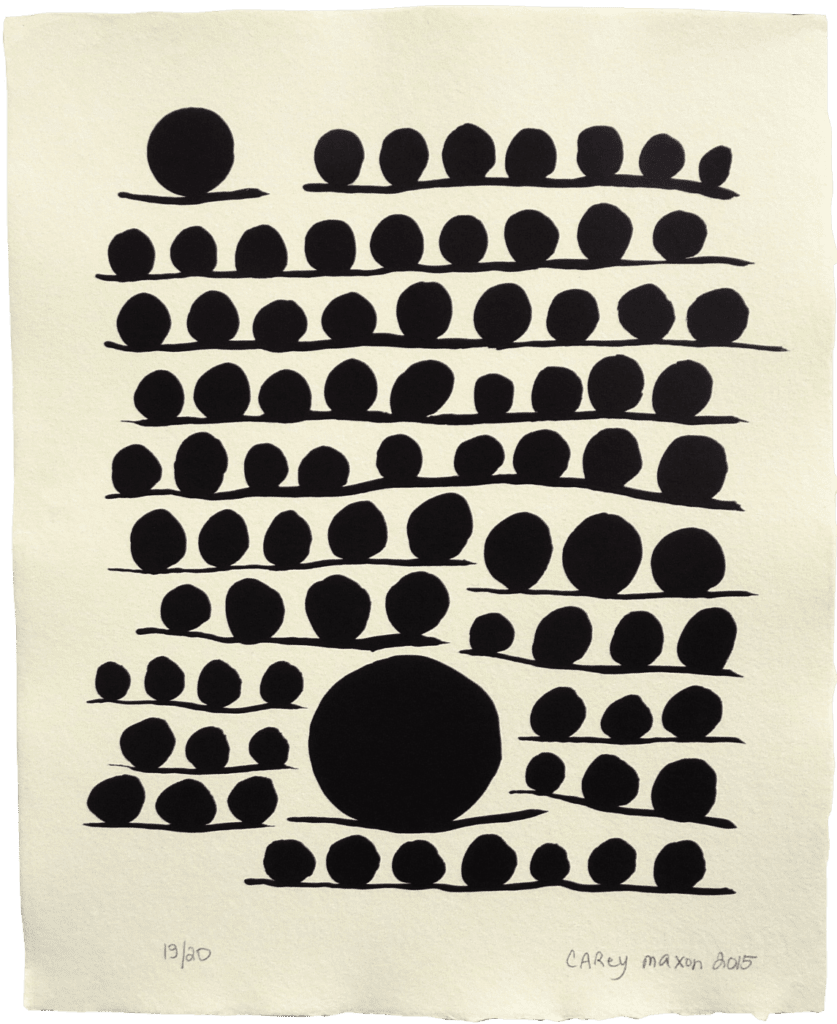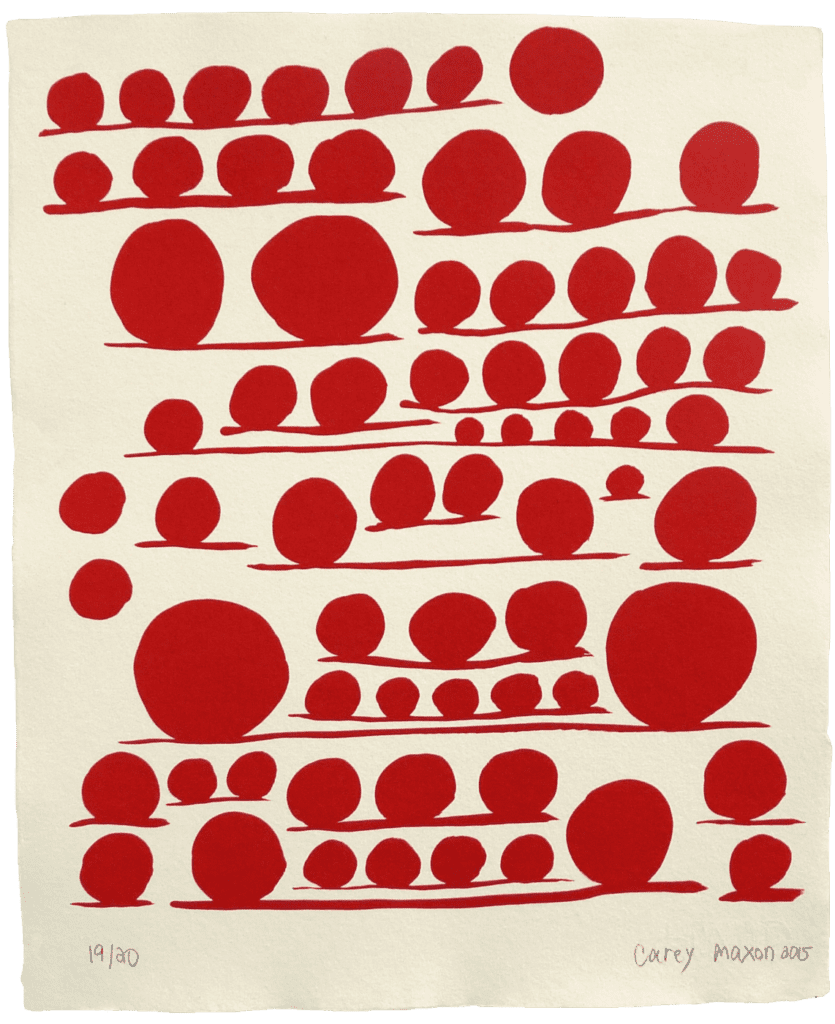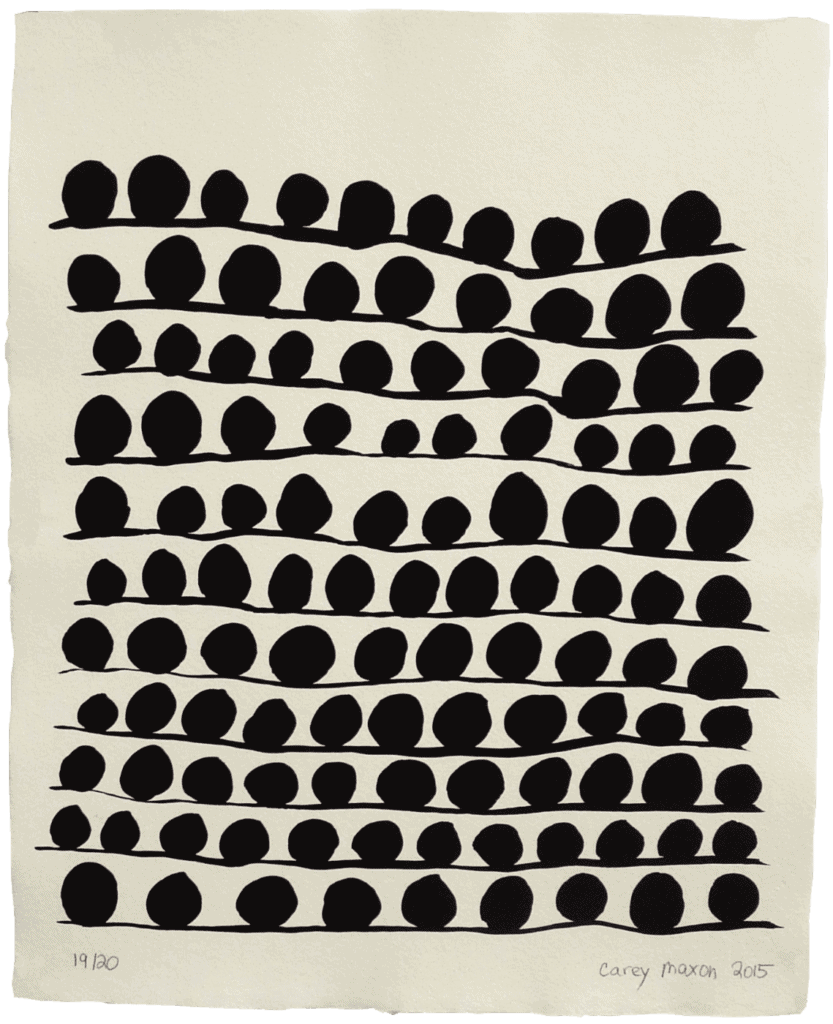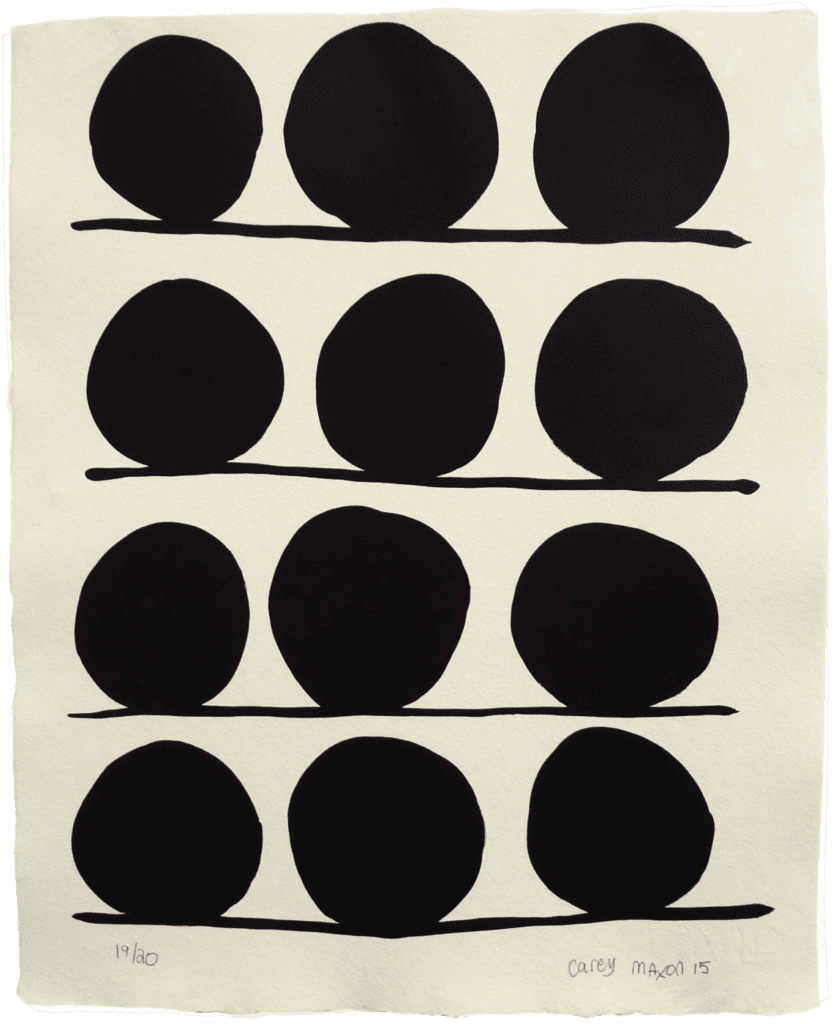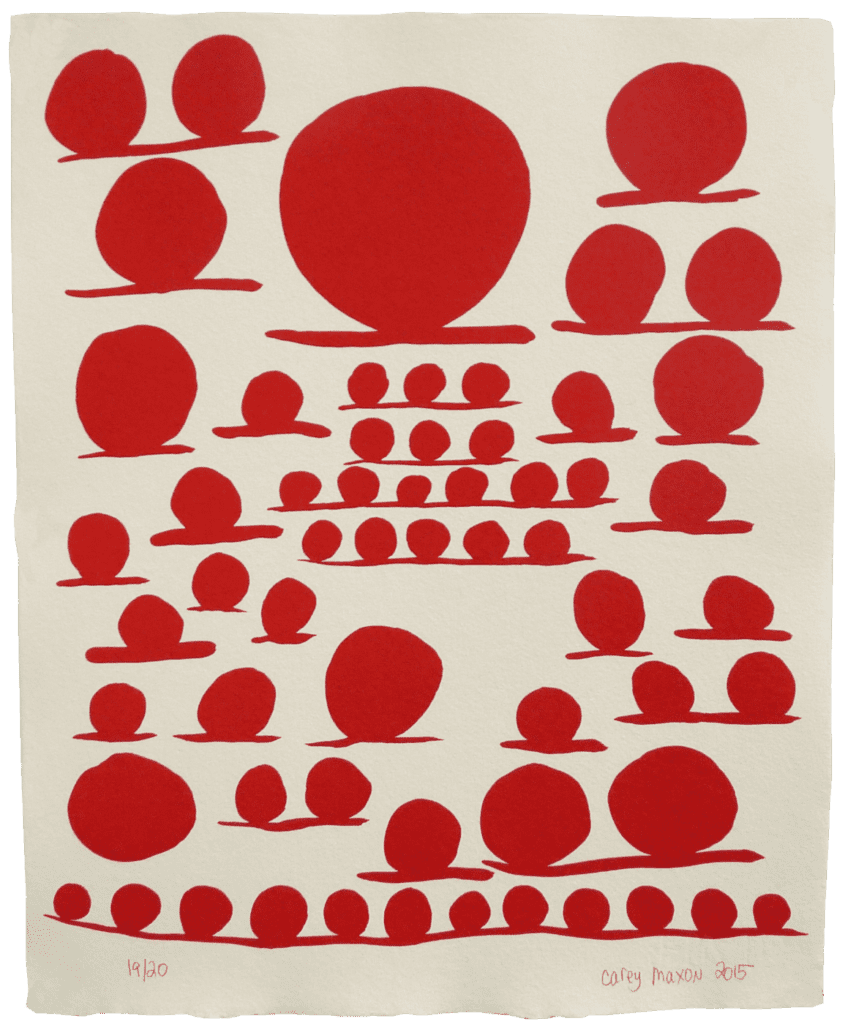Artist Carey Maxon #FiftyQuestions
What event or factor in your life has been the most pivotal in your decision to become an artist?
I was eight or nine and my aunt asked me why I wanted to be an artist. I told her I thought the sleep schedule sounded good. She laughed; but didn’t seem to disagree! I also remember I drew a heart in kindergarten with a complex mixture of dark colors that seemed to make quite the impression. I am a little ashamed to say it, but the positive response I got from making drawings as a kid was very impactful. I sensed the drawings brought people happiness, joy, and intrigue—and in that I felt loved and joy myself.
What artist do you consider most influential to your ongoing development as an artist?
I am more influenced by nature, humanity, technology, and architecture more than any one artist. So, it’s not a person. It’s the whirl of visual phenomenon around me. Endlessly influential!
What has been the most significant challenge you’ve faced that you overcame to continue your art practice?
The most challenging part of sticking to making art has been the satisfaction I get from the simplicity in not making it. When I am not working, things are tidy. I try to work tidy too, but the demands of other obligations (mostly social, which includes income generating activities) inevitably lead to piles of materials, unfinished pieces, dirty brushes, and a bunch of other things—everyday stuff. The chaos is overwhelming and not really my preference. If I don’t work in the studio the chaos is substantially less. However, I sometimes funnel quite a bit of energy and money into things that are not art I find that those activities are fulfilling only up to a certain point. I sometimes wind up in mini crises; realizing I haven’t prioritized it; regretting the fact that I haven’t prioritized it. It feels like an insurmountable mountain. These moments of demoralization are the most consistent ongoing challenge I have faced. Along with some health issues and misunderstandings me.
Describe your ideal workspace.
My ideal workspace has an assistant. That is all there is to it! I can work anywhere. But if I had help, I would be a lot more productive. Large and small workspaces are both super important to me. I’d love to work more outside. I don’t mind the randomness in life that results in making work in weird places like hotel tables or floors, abandoned schools. . . or even in bed is lovely! On the subway! At my desk at a day job! It’s all great studio space. I guess my workspace is really a headspace and includes all these little moments.
What one sentence do you hope describes how your art practice will be recorded in history, and why?
I don’t hope for anything in how my work is recorded or remembered in history. I do write a lot and I figure that will remain as an insight into my considerations and the type of person I am.
But I don’t write with that hope. I write as a form of personal, private, therapy-like assistance so as to keep going about my life without completely losing my sense of self and well-being. It’s a way of tapping into what I think and feel.
In thinking of the lulls and gaps or lost places in your practice over the years, who or what has re-energized you?
It is often some interaction with another artist, or some professional entity related to art. Something reminds me that other people see me as an artist, or that art has its place in the world. Sometimes living where I do, I feel very far away from any social fabric which recognizes the intellectual legitimacy of being an abstract, feisty, irreverent, living artist. My responsibilities here pull me so far outside my range, that it has been a challenge to remember that I am an artist, something that was a lot easier to cultivate back in Brooklyn. This environment in Tuscany is incredibly conducive to working but I don’t have a ton of creative company.
Sometimes forgiving myself for not working or understanding why I haven’t been working is the thing that re-energizes me. Recently, I took a drive here in Tuscany. It was spring and particularly dramatic. All my dormant periods suddenly made sense. I felt a lot more compassionate towards myself. Why would I make art in the middle of all this? What purpose does a painting have when you look out your window and see this? That softening of the harsh inner critic has the potential to get me working again.
If you could travel in time, within what era or milieu would you most like to have an artist residency? And why?
I would like to go back to a land-based, tribal existence—fire for cooking, rivers for washing. I’d like to understand more about that deep purpose of those early wall paintings. If I spent 30 days with no electricity, making fires for every meal, collecting food—what would be the one thing I painted?
Do you have a relationship with the distant future – in other words, are you making artwork that bears a message or impact for coming generations?
No. I would be surprised if the structures we have for viewing and storing art exist in the distant future.
Do you have a relationship with an animal in your life that influences your art process?
I have a cat sleeping beside me as I write this. That is very soothing and comforting. Inevitably, with the bubbling fountain of conflict and emotions involved in creating art, a non-verbal witness like a cat or dog is a form of reassurance.
About Carey Maxon
Carey Maxon was born in California in 1978. She earned a B.A. in Art History/Visual art from Barnard College, Columbia University in New York in 2000. She earned a MA in Humanistic and Transpersonal Psychology Saybrook University in San Francisco in 2005. Her works on paper were shown at Pierogi Gallery in Brooklyn, New York. She worked as an assistant to printer Maurice Sanchez at Derriere L’Etoile Studios from 2007-20015. She now lives in Italy and hosted SSB Away residencies at Podere Malabiccia. Her works on paper are included in collections throughout the United States and can be viewed and purchased by contacting carey.maxon@gmail.com.
